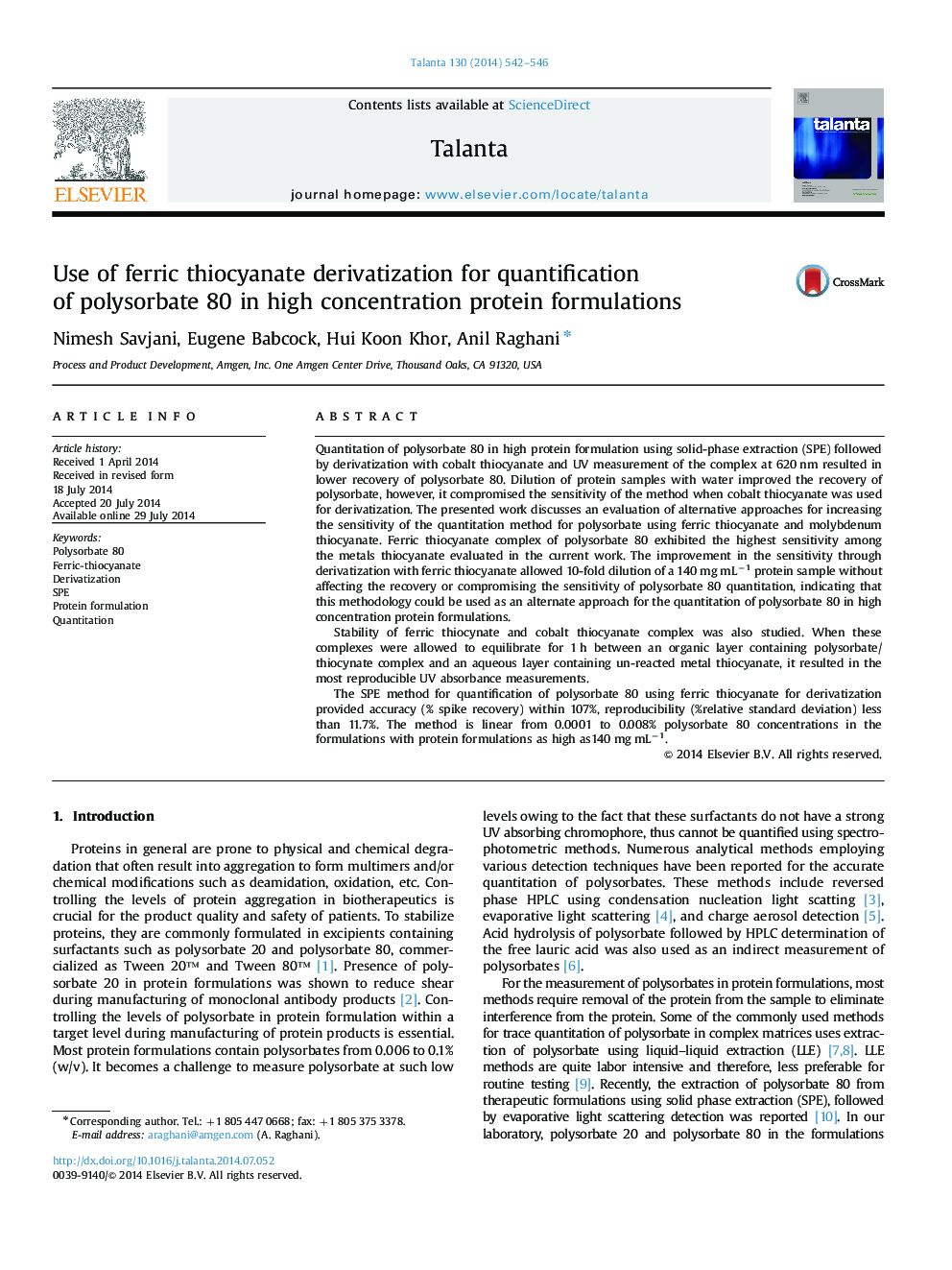| Article ID | Journal | Published Year | Pages | File Type |
|---|---|---|---|---|
| 1243626 | Talanta | 2014 | 5 Pages |
•Derivatization polysorbate 80 (PS80) with various metals thiocyanate was evaluated.•The method was applied for quantification of PS80 in high protein formulation.•Derivatization of PS80 with ferric thiocyanate provided highest sensitivity.•The method was shown to be accurate, precise and linear over 0.0001 to 0.008% PS80.
Quantitation of polysorbate 80 in high protein formulation using solid-phase extraction (SPE) followed by derivatization with cobalt thiocyanate and UV measurement of the complex at 620 nm resulted in lower recovery of polysorbate 80. Dilution of protein samples with water improved the recovery of polysorbate, however, it compromised the sensitivity of the method when cobalt thiocyanate was used for derivatization. The presented work discusses an evaluation of alternative approaches for increasing the sensitivity of the quantitation method for polysorbate using ferric thiocyanate and molybdenum thiocyanate. Ferric thiocyanate complex of polysorbate 80 exhibited the highest sensitivity among the metals thiocyanate evaluated in the current work. The improvement in the sensitivity through derivatization with ferric thiocyanate allowed 10-fold dilution of a 140 mg mL−1 protein sample without affecting the recovery or compromising the sensitivity of polysorbate 80 quantitation, indicating that this methodology could be used as an alternate approach for the quantitation of polysorbate 80 in high concentration protein formulations.Stability of ferric thiocynate and cobalt thiocyanate complex was also studied. When these complexes were allowed to equilibrate for 1 h between an organic layer containing polysorbate/thiocynate complex and an aqueous layer containing un-reacted metal thiocyanate, it resulted in the most reproducible UV absorbance measurements.The SPE method for quantification of polysorbate 80 using ferric thiocyanate for derivatization provided accuracy (% spike recovery) within 107%, reproducibility (%relative standard deviation) less than 11.7%. The method is linear from 0.0001 to 0.008% polysorbate 80 concentrations in the formulations with protein formulations as high as140 mg mL−1.
Graphical abstractFigure optionsDownload full-size imageDownload as PowerPoint slide
